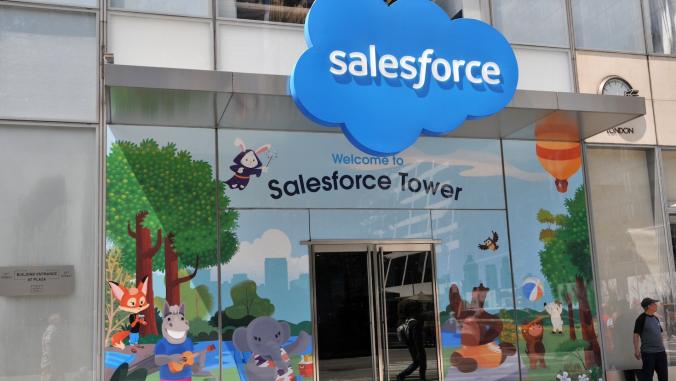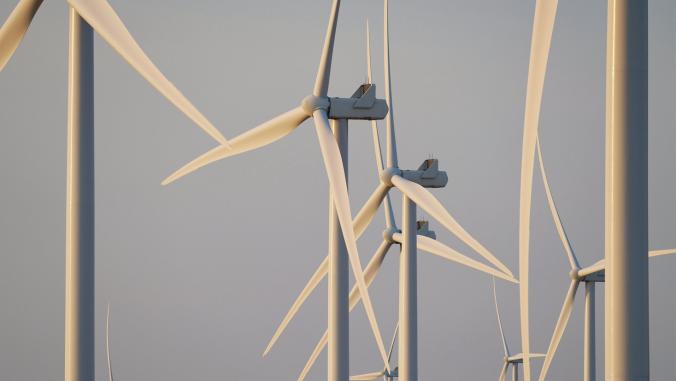Why Philips' EcoDesign play is paying off in more than one way
<p>The company's 10-year EcoDesign strategy is paying off, and not just in reputation. In 2013 its "green" electronics and technologies made up more than half of its sales.</p>

Philips SlimStyle bulb
One decade ago, Royal Philips embraced a development philosophy called EcoDesign with the broad aim of minimizing the impact of its products on the environment. The strategy isn't unique: its fiercest rivals ranging from General Electric, Matsushita, Sony, Siemens and Pansonic all boast mature eco-strategies. Still, Philips' focus is paying off demonstrably not just in sales, but in brand perception.
Last year, for example, Philips consumer electronics, lighting and healthcare technologies created under that green products umbrella accounted for 51 percent of its approximately $16 billion in revenue — beating its internal goal by more than two years. During the previous year, the company invested close to $700 million in "green innovation" to keep up that momentum over time although that number pales in comparison with the $4.2 billion that GE has invested in its "healthmagination" research and development over the past several years.
To be fair, Philips has been focused on greening its product portfolio for quite some time. LIke some of its biggest competitors, it started methodically driving out toxic chemicals and minimizing the environmental impact of its operations way back in the 1970s; it adopted its first formal EcoVision program and corporate goals back in 1998.
Now, the company is shooting for its green products to account for 55 percent of revenue by 2015, according to a senior sustainability executive. "It is challenging, I can tell you, especially as the overall market pushes and stretches the bounds of what is possible," said Thomas Marinelli, senior director of Environment Health and Safety, with the Philips sustainability group.
Six pillars of green innovation
The focal areas within the EcoDesign creation process include energy efficiency, packaging, substances, weight, recycling and disposal, and lifetime reliability: Philips worked out the methodology in collaboration with the Delft University of Technology in the Netherlands. "We want our products to be significantly better compared to the predecessor lines," Marinelli said, also pointing to technology from the company's closest competitors.
The improvements catalyzed by EcoDesign differ depending on the area you're talking about. For the highly specialized healthcare portfolio, which includes medical equipment and where it competes fiercely with GE, Philips introduced 12 new products during 2013 with a big focus on energy efficiency. An example is the latest EPIQ ultrasound imaging system, which reduces both energy consumption and product weight by 30 percent compared with the previous generation. Its new X-ray systems and patient monitors offer similar improvements. GE has been pushing similar improvements of between 20 percent and 25 percent for its own medical systems.
In its consumer lifestyle line-up, Philips is prioritizing avoidance of substances of concern, along with the use of recycled materials and reducing power consumption. Consider the new 24-inch and 27-inch PowerSensor Displays introduced late last month, which use sensors to detect when someone is nearby to automatically reduce screen brightness if someone gets up and walks away from the screen. This helps cut energy usage for the LCD, EPEAT Gold-certified monitors by up to 80 percent compared with alternatives, according to the company. The technology is also TCO Edge certified, which means that it also uses a minimum of 65 percent post-consumer plastics, and comes in 100 percent recyclable packaging.
This sort of innovation, of course, is now table stakes for technologes such as displays but over the years, Philips has managed a number of firsts in this area. Although it's not in the television market any longer, it was one of the first companies to release a TV free of polyvinyl chloride plastic and brominated flame retardants. Historically, Greenpeace has gotten on Philips' case for being slower than other manufacturers to develop a robust global recycling and product takeback program. But it actually was early to the game: its first producer collection programs emerged in the 1990s, and in 2013, it collected an estimated 31,000 tonnes. (That compares with 22,500 in 2010.)
Most readers are familiar with Philips' extensive business in LED lighting platforms, where it is one of the market leaders along with the likes of GE, Toshiba, Cree, Osram and Lighting Science Group.
One relatively recent addition to its lineup is the Pacific LED Green Parking system, which includes integrated luminaires, wireless controls and presence detection applications. The company pitches the platform as both a safety play and a cost-effective replacement for traditional fluorescent lamps that can pay for itself in less than three years. To that end, Philips introduced a financing model that encourages garages and businesses to invest in ongoing improvements to its technology.
"We're selling access instead of ownership," Marinelli said.
This mantra is actually part of Philips' advocacy of a "circular economy" that stresses "maintenance, reuse, remanufacture and recycling" of products rather than the ideas of "take, make and dispose" as the world heads toward a population of 9 billion people in 2050. Marinelli noted: "We're aiming to decouple economic growth from the use of natural resources."
Research from McKinsey estimates that $1 trillion worth of value can be recovered by reusing resources that otherwise would be wasted.
Across its product groups, Marinelli said Philips' teams are encouraged to ask: "Can I upgrade a product? Can I remanufacture it or give it a facelift? Can I take it apart and harvest pieces?"
Aside from positively affecting sales, the Philips EcoDesign philosophy is helping the company's public image. It was a U.S. Environment Protection Agency's Energy Star Partner of the Year for 2014; Panasonic Eco Solutions and LG Electronics, were among the companies named for Sustained Excellence. What's more, among all the high-tech players featured on Interbrand's 2014 Global Green Brands ranking, Philips moved up the most on the ranking, jumping nine spots to No. 14. (Among its competitive set, Panasonic and Sony scored higher; GE was No. 23.) Over the past two years, Philips moved up 17 spots.
"We believe that adopting a circular economy approach to our business models, materials reuse and design will further give us a competitive advantage, while making the world more sustainable," said Henk de Bruin, head of Group Sustainability at Philips, in a statement.
All images via Philips, including top image of Philips SlimStyle LED bulb





